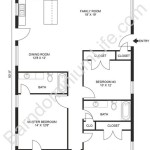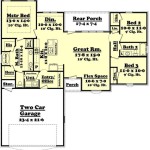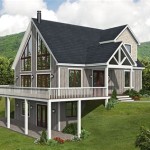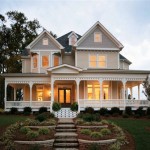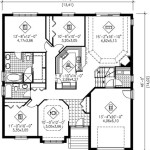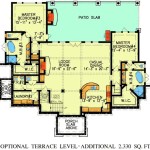One-Story Low Country House Plans: A Comprehensive Guide
Low Country architecture embodies a design philosophy deeply rooted in the coastal regions of the Southeastern United States, particularly South Carolina and Georgia. Characterized by its relaxed aesthetic, practicality, and adaptation to the warm, humid climate, Low Country homes often prioritize single-story layouts. One-story Low Country house plans offer a unique blend of charm, accessibility, and functionality, making them an attractive option for a wide range of homeowners.
Understanding the nuances of this architectural style is essential for anyone considering building or renovating a Low Country home. This article provides a detailed overview of one-story Low Country house plans, exploring their defining characteristics, advantages, key considerations, and popular design elements.
Defining Characteristics of Low Country Architecture
Low Country architecture is more than just a set of aesthetic preferences; it's a practical response to the environment. Several key features distinguish this style from other architectural approaches. These characteristics contribute to the overall comfort, functionality, and visual appeal of Low Country homes.
One of the most prominent features is the raised foundation. Historically, this design element served to protect the home from flooding, a common occurrence in coastal areas. Today, even with improved drainage systems, the raised foundation remains a defining characteristic, providing under-house ventilation and creating a visually appealing elevation. This elevated structure often incorporates a ground-level area used for parking, storage, or outdoor living spaces.
Wide, expansive porches are another hallmark of Low Country architecture. These porches are designed to provide ample shaded outdoor living space, allowing residents to enjoy the surrounding landscape while being shielded from the intense sun and humidity. Wrap-around porches, in particular, are common, offering panoramic views and enhancing the connection between the interior and exterior environments.
The use of natural materials is also a key aspect of Low Country design. Wood, particularly cypress and pine, is frequently used for siding, trim, and flooring. These materials are durable, aesthetically pleasing, and readily available in the region. Employing natural aesthetics can also be achieved through natural fiber rugs, wood furniture, and incorporation of greenery as décor. Brick is also commonly used, often for foundations, chimneys, and walkways, adding a touch of historical charm and durability.
Large windows and doors are strategically placed to maximize natural light and ventilation. This design feature helps to reduce reliance on artificial lighting and air conditioning, contributing to energy efficiency. Cross-ventilation is a primary consideration, allowing breezes to flow through the home, promoting natural cooling. Window shutters, often louvered, provide additional shade and privacy.
Finally, the roof design plays an important role in Low Country architecture. Gabled roofs, often with wide overhangs, are common. These overhangs provide shade and protect the walls from rain. Metal roofing is frequently used due to its durability, reflectivity, and ability to withstand harsh weather conditions.
Advantages of One-Story Low Country House Plans
Choosing a one-story layout for a Low Country home offers several distinct advantages over multi-story designs. These benefits contribute to the overall functionality, accessibility, and long-term livability of the home. One-story living can provide benefits for homeowners of all ages and is worth considering when deciding on a home plan.
Accessibility is a primary benefit. A single-story layout eliminates the need for stairs, making the home accessible to people of all ages and abilities. This is particularly important for families with young children, individuals with mobility limitations, and those planning to age in place. Universal design principles can be seamlessly integrated into a one-story Low Country home, ensuring that the space is functional and comfortable for everyone.
Ease of maintenance is another significant advantage. With no stairs to navigate, cleaning and maintenance tasks become easier and more efficient. Exterior maintenance, such as painting and gutter cleaning, is also simplified on a one-story home. Furthermore, one-story homes often have simpler plumbing and electrical systems, reducing the potential for costly repairs.
Enhanced indoor-outdoor living is a key characteristic of Low Country design, and one-story layouts facilitate this connection. With direct access to the outdoors from multiple rooms, residents can easily enjoy the surrounding landscape and outdoor living spaces. Patios, decks, and gardens can be seamlessly integrated into the design, creating a cohesive and harmonious living environment.
Energy efficiency can also be improved with a well-designed one-story home. With proper insulation and strategic window placement, heating and cooling costs can be minimized. The elimination of stairwells also reduces the amount of conditioned space, further contributing to energy savings. Horizontal airflow creates a more even distribution of temperature throughout the home.
Finally, one-story homes often offer a more intimate and cohesive living environment. The absence of stairs encourages greater interaction between family members and creates a more relaxed and comfortable atmosphere. The open floor plans commonly found in one-story Low Country homes further enhance this sense of connection.
Key Considerations When Choosing a One-Story Low Country House Plan
While one-story Low Country house plans offer numerous advantages, careful consideration must be given to several key factors to ensure that the design meets the homeowner's specific needs and preferences. These considerations include lot size, spatial planning, and building codes. Understanding these factors is crucial for a successful building or renovation project.
Lot size is a primary consideration. One-story homes typically require a larger footprint than multi-story homes to accommodate the same amount of living space. Property owners must ensure that their lot is large enough to accommodate the desired square footage, setbacks, and outdoor living areas. Zoning regulations and building restrictions may also impact the size and layout of the home.
Efficient spatial planning is essential in a one-story home to maximize the use of available space. Open floor plans are common in Low Country design, but careful consideration must be given to the placement of rooms and circulation patterns to ensure a smooth and functional flow. Zoning areas for privacy and noise reduction helps to create well-defined spaces.
Natural light and ventilation are crucial elements of Low Country design, and strategic window placement is essential to maximize these benefits. Windows should be positioned to capture prevailing breezes and provide ample natural light throughout the day. The orientation of the home on the lot should also be considered to minimize solar heat gain.
Storage is another important consideration in a one-story home. With no attic or basement, alternative storage solutions must be incorporated into the design. Built-in cabinets, closets, and shelving can help to maximize storage space without compromising the aesthetic appeal of the home. Dedicated storage rooms or outbuildings may also be necessary.
Finally, local building codes and regulations must be carefully reviewed before beginning any construction project. These codes often address issues such as flood plain requirements, wind resistance, and energy efficiency. Compliance with these regulations is essential to ensure the safety and long-term integrity of the home.
In summary, planning a one-story Low Country home requires close attention to many details, including material choice, spatial planning, accessibility needs, and adherence to building codes. The considerations discussed here will help homeowners to design a functional and beautiful living space.

Low Country House Plans Floor Designs Houseplans Com

Low Cost Single Story 4 Bedroom House Floor Plans Country Farm 2200 Sf Basement One

Low Country Style Single Story House Plans Bungalow Craftsman

Plan W15035nc Narrow Lot Low Country Cottage Vacation Beach Photo Gallery House Plans Home Floor Layout

Our Best Tiny Country House Plans And Small Designs

Plan 765022twn Beautiful Low Country Home With Detached Garage Homes House Plans Farmhouse

10 Small House Plans With Open Floor Blog Homeplans Com

One Story House Plans Single Floor Design

Plan 765022twn Beautiful Low Country Home With Detached Garage Homes Plans House

These Small House Plans Pack A Lot Of Punch Houseplans Blog Com


